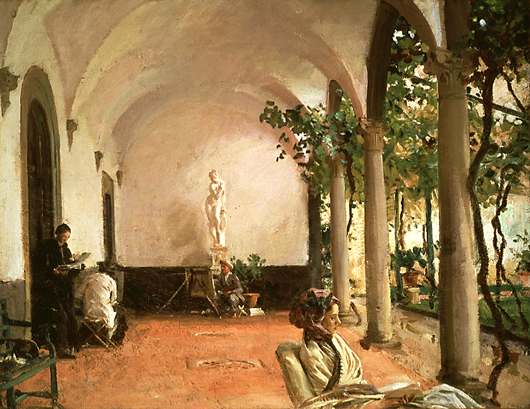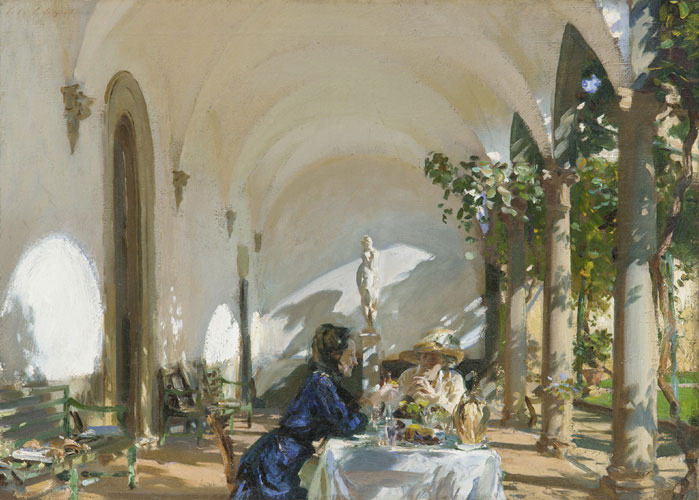



|
|
|
These two paintings were painted at the same place, if not the same exact spot and placement of Sargent's easel. Look at the pillars, the doorways, the bench along the wall, and of course, the statue at the far end. It must also be the same trip because the foliage of the trees are identical in the way they encroach into the patio. Here, we have a rare opportunity to see Sargent working in Plein air with the same scene in two different times of a day. The lower one, we are to believe, is in the morning. The light and shadows of the morning breakfast might indicate that the patio faces in an easterly direction. Could the upper painting be from an afternoon since the garden and walk off to frame right seems to be in the shadow of the building (I assume this because it is in the same light at the covered patio with defused and even lighting). Maybe it's even an early evening -- pre-dusk. Look through the trees, off in the distance and how the background is much lighter. Could we be seeing the same scene at opposites ends of a day? Or could the day be overcast, possibly it had rained. Notice the walkway to the right. Are there puddles from the rain? Is this why the two artists are under the covered patio? This is what got me so excited about these two paintings together. Villa Torre Galli: The Loggia, the upper painting, at first impressions, looks more finished, more intricate, probably because of the perception of finish on the individuals in the painting; but I'm not sure this is the case. It is interesting to note John's
own account of Monet's Impressionism:
Is this what John was doing -- making a study of light? I don't know for sure but I think there is a strong case that this is exactly what he was doing. It is incorrect to think that the top painting is more finished. If you look at how Sargent painted the moldings above the doorways in both pictures, they are exactly the same. Both, it would be assumed, would have the same degree of lighting -- the harshness of the morning sun not reaching that part of the wall. The reason we can't see the texture of the patio floor in Breakfast In The Loggia is because that is how he perceived it -- not because this is a quicker painting, or he had been lazy, or was incapable, or was doing it in a more loose style, or any other reason. And so it is with the people he painted. In contrast, the upper painting's light is clearly more defused allowing the eye to take in more detail. Once I realized what was happening, just studying these two together becomes a lot of fun. |
